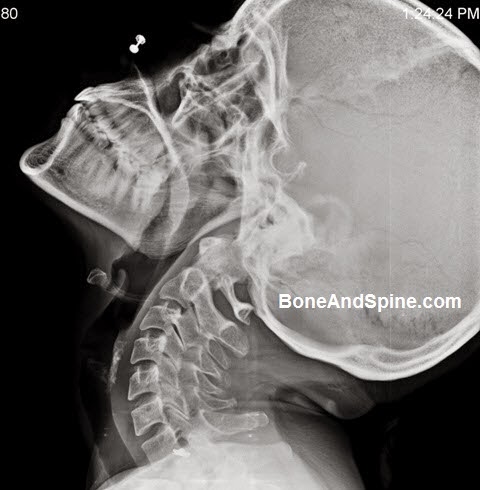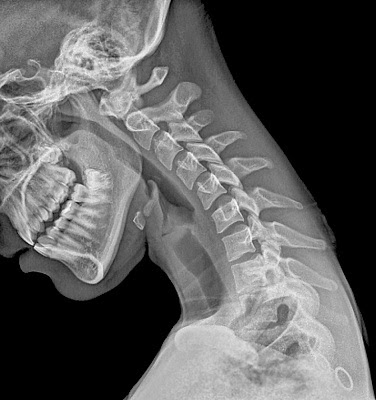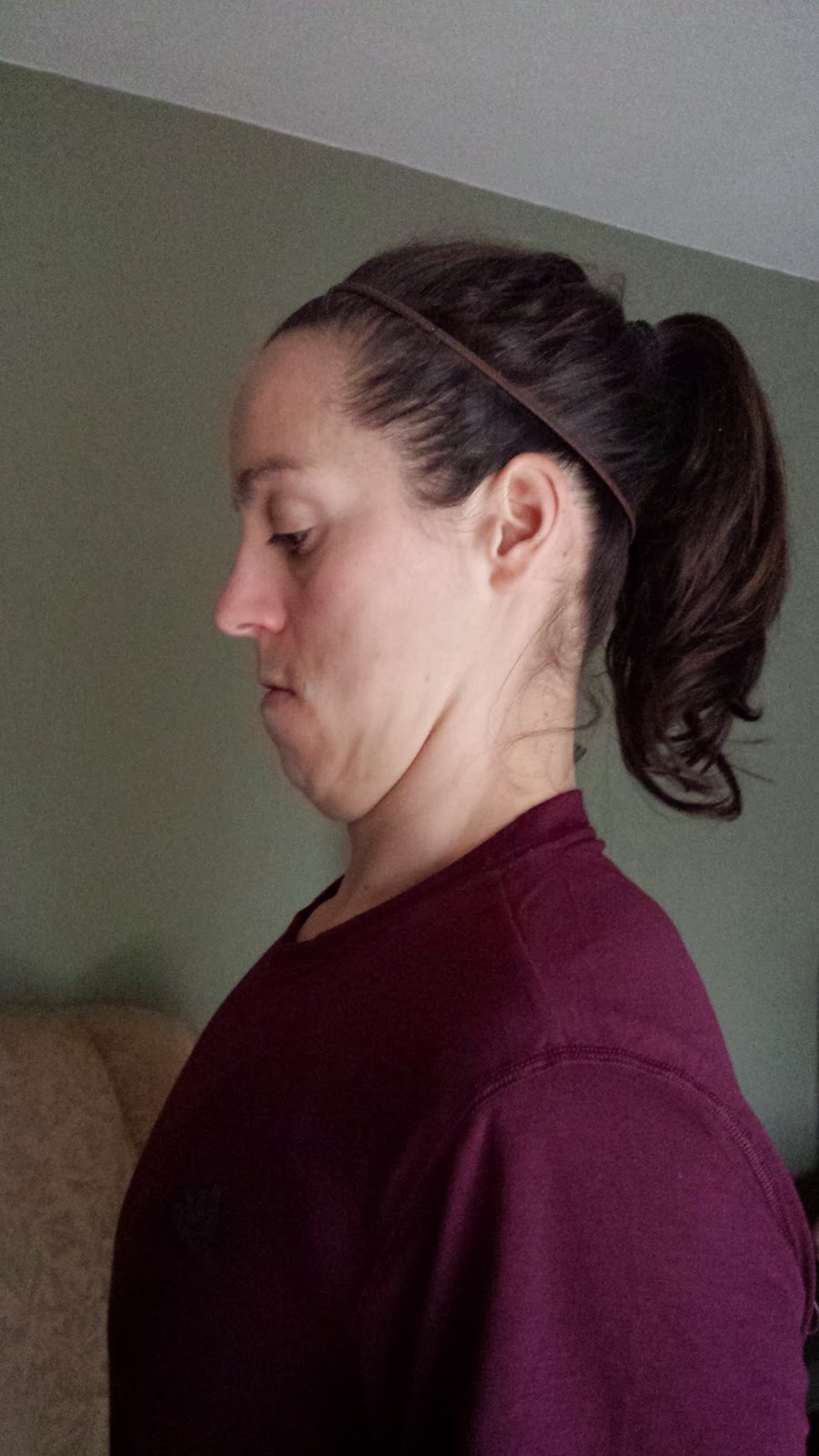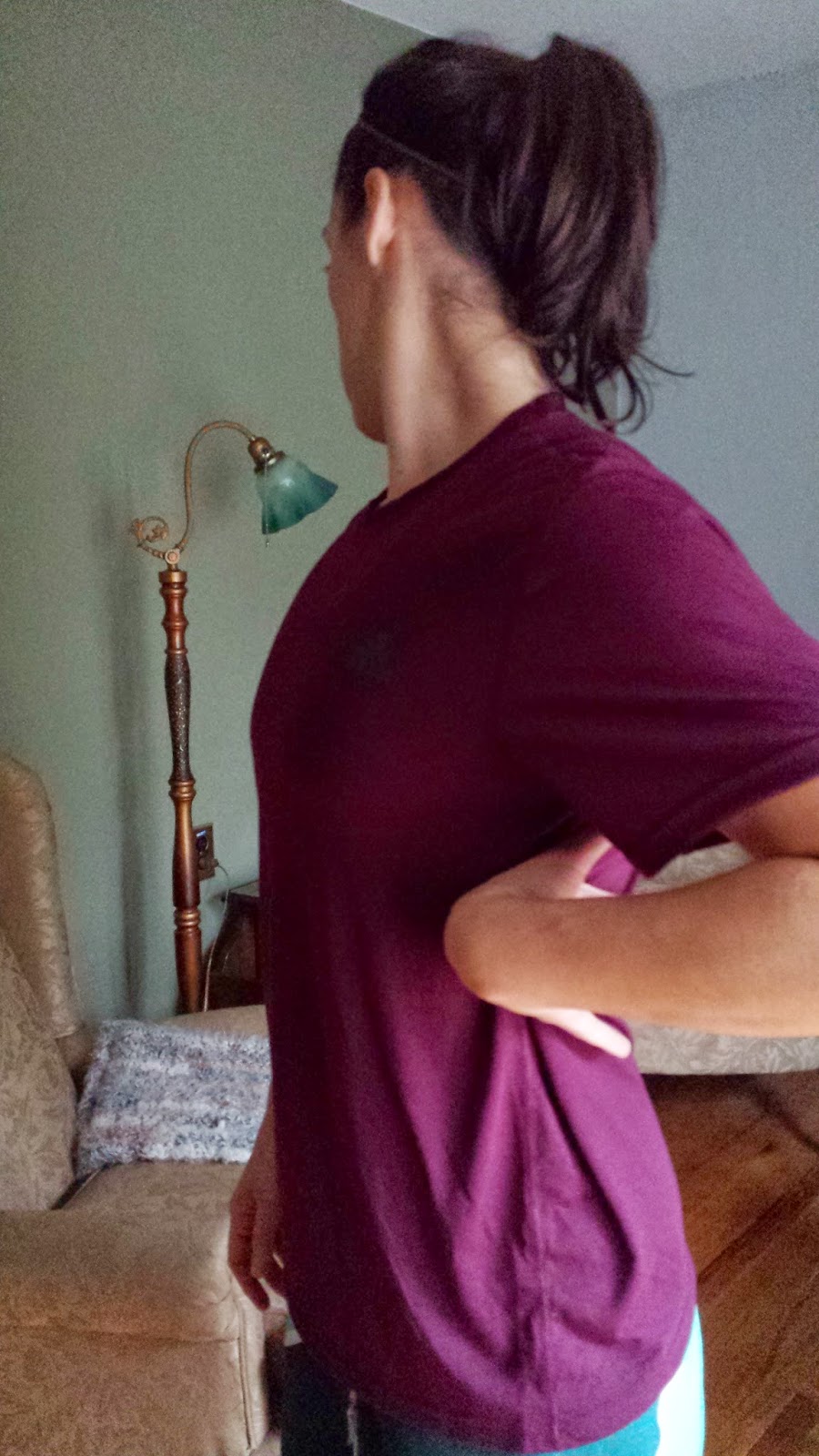The Neck
 |
| c1 (top) – c7 (bottom)* |
There are less protrusions and more gaps toward the top, and more bony points and stackable processes, limiting movement toward the bottom.
 |
| c2 or axis – connects skull to spine* |
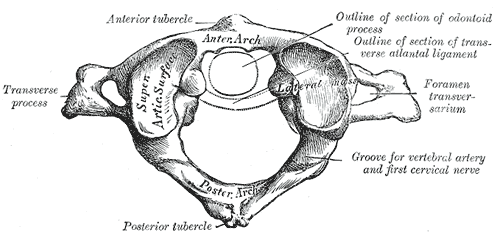 |
| c1 or atlas – base of skull* |
 |
| c7 sturdy and protective* |
 |
| photo credit: ericcressey.com |
 |
| one = flexion (chin to chest) two = extension (drop back) three = full rotation to side and then chin touch to collar bone |
A few rules guide these patterns:
I. There should be NO pain when doing these movements.
1. Chin protrusions and tucks
2. Wrist flexed (or extended) diagonals with scapular retraction and internal rotation
Place back of hand on ribcage of the side of neck you want to stretch and rotate head away. Drop opposite ear towards back of far shoulder. You can see the thin scalene pop up from the base of my ear down in the picture on the right. The two big guys seen in both pics are the trapezius and sternocleidomastoid. Wrist flexion flosses the c6 nerve innervation.
3. Extension when hanging passively from a bar (shoulders up toward ears)
4. Flexion, extension, and diagonals when holding heavy dumbbells (weight drops and relaxes shoulders and trapezius)
5. Driving flexion from extenders
Our tight, on-and-working-all-the-time back of neck needs to be reminded what ‘off’ is. By dropping head back, forcing minute further extension, and then using those same extenders to drop the chin to chest, you get the muscles to do MORE than they’re used to. This extra signals a ‘new’ contraction which then relaxes.
TO REVIEW:
- The neck or cervical spine is built for rotation
- Posture feeds into neck function
- The mobility of the thoracic spine or mid-back is built to AID cervical mobility, not be fixed, leaving the neck to do everything
- You should be able to touch chin to chest, drop head back so chin is extended past vertical, and rotate neck to side, touching chin to collar bone
- Adjust shoulder positions with these patterns to troubleshoot movement, utilizing stretch release and finding root of dysfunction
- Consistent practice in packing the neck often enough to elicit change





